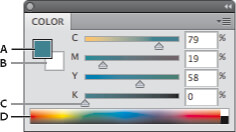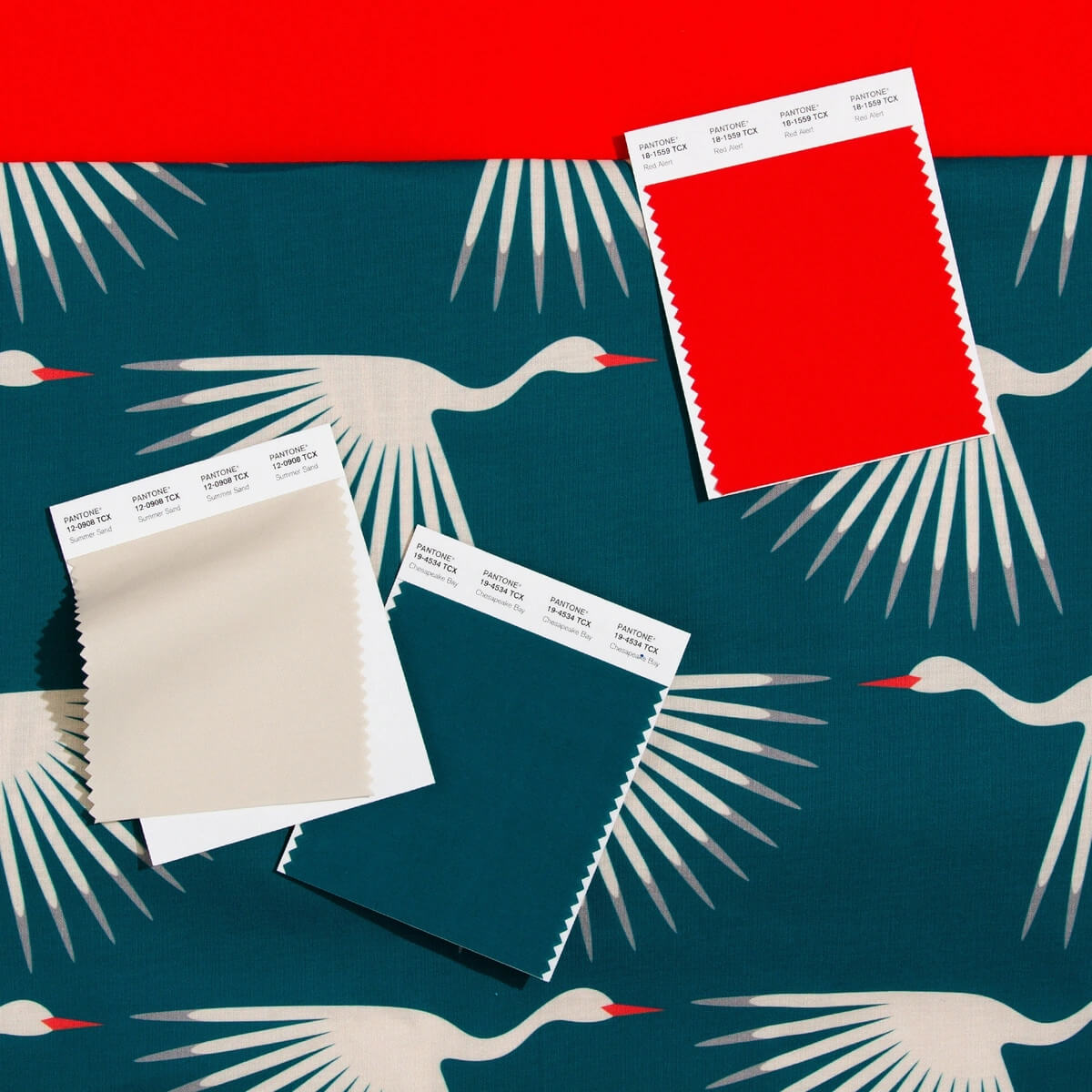Si vous voulez que vos dessins imprimés soient d'une qualité exceptionnelle, suivez les étapes suivantes avant d'envoyer votre dessin pour qu'il soit imprimé par un professionnel. Cela vous permettra de vous assurer qu'il n'y a pas d'erreurs dans le produit final. Dans cet article, je vous expliquerai comment faire correspondre la couleur de la peinture à celle des tissus.
Utiliser le tableau CMJN comme fournisseur de tissu
Vous êtes-vous déjà demandé pourquoi les couleurs de votre projet d'impression étaient différentes de celles de votre écran ? Si vous avez déjà vécu cette expérience, vous n'êtes pas le seul. Bien qu'elle puisse sembler anodine, la couleur est en fait un élément très important de toute conception, et il n'est pas toujours facile d'y parvenir. Voici un bref aperçu des raisons pour lesquelles les couleurs peuvent sembler différentes à l'impression et à l'écran.
La première raison est liée à la manière dont nos yeux perçoivent les couleurs. Nos yeux reçoivent des ondes lumineuses et les transforment en signaux électriques que notre cerveau interprète comme des couleurs. Le spectre de la lumière visible contient toutes les couleurs que nous pouvons voir, du rouge au violet. Mais lorsqu'il s'agit d'écrans, toutes les couleurs ne sont pas égales.
La plupart des écrans émettent une lumière dite "additive", ce qui signifie qu'ils créent des couleurs en combinant différentes intensités de lumière rouge, verte et bleue (RVB). En revanche, les documents imprimés reflètent la lumière de leur surface et utilisent donc un processus "soustractif" dans lequel différentes combinaisons d'encre cyan, magenta, jaune et noire (CMJN) sont utilisées pour créer différentes couleurs. C'est pourquoi ces deux processus sont souvent appelés "impression RVB" et "impression CMJN".
La deuxième raison est liée à l'appareil que vous utilisez pour visualiser vos dessins. Différents appareils utilisent différents modèles de couleurs pour produire des couleurs, et chaque modèle utilise une gamme différente de valeurs de couleurs. Les trois modèles les plus courants sont sRGB, Adobe RGB et CMYK. La plupart des ordinateurs et des téléphones utilisent le modèle de couleurs sRGB, tandis que la plupart des imprimantes utilisent le modèle de couleurs CMYK. Bien que le modèle Adobe RVB couvre une plus large gamme de couleurs possibles que le modèle sRGB ou CMYK, il n'est pas aussi couramment utilisé car il ne peut pas être reproduit avec précision sur la plupart des appareils.
La troisième raison est que les documents imprimés sont constitués de minuscules points d'encre, alors que les dessins numériques sont constitués de minuscules pixels de lumière. Lorsque l'encre est imprimée sur du papier, les points se mélangent pour former une zone de couleur unie. En revanche, lorsque les pixels sont visualisés sur un écran, ils restent séparés les uns des autres, de sorte que nous pouvons voir les pixels individuels qui composent une image. Cette différence est connue sous le nom d'"engraissement des points" ou de "tramage" et peut faire apparaître les couleurs imprimées plus sombres et plus saturées qu'elles ne le sont à l'écran.
Lorsqu'il s'agit de choisir des couleurs de peinture, il convient de garder à l'esprit un certain nombre d'éléments. Si vous essayez d'assortir une couleur de peinture à un tissu, la première chose à faire est de déterminer les valeurs CMYK qui représentent les couleurs que vous souhaitez assortir. Une fois ces valeurs déterminées, vous pouvez utiliser divers outils en ligne pour trouver les couleurs de peinture qui correspondent. Vous pouvez également demander à votre vendeur de vous aider à trouver les bonnes couleurs de peinture. Ils devraient être en mesure de faire correspondre la couleur du tissu de manière assez proche.
Utiliser les échantillons de couleurs du vendeur de tissus
Lorsque vous essayez d'assortir des couleurs de peinture à un tissu, l'une des meilleures choses à faire est de demander à votre vendeur des échantillons de couleurs. Vous pourrez ainsi comparer les échantillons au tissu et vous faire une idée de ce qui conviendra le mieux. Vous pouvez également demander plusieurs échantillons différents afin de tester différentes nuances et tonalités. Une fois que vous avez trouvé quelques couleurs qui vous plaisent, il est temps de les tester. La meilleure façon de procéder consiste à peindre de petits carrés de chaque couleur sur un morceau de papier ou de carton. Tenez ensuite les carrés contre le tissu et voyez ce que cela donne. Si possible, essayez d'observer les couleurs à la lumière naturelle et artificielle. Vous aurez ainsi une meilleure idée de l'aspect des couleurs dans différents contextes. Une fois que vous avez trouvé quelques couleurs qui vous plaisent, il est temps de commencer à peindre !
Pantone devient la norme
Si vous êtes comme la plupart des gens, vous ne pensez probablement pas souvent à la peinture. Mais pour ceux qui travaillent dans le secteur de la conception, la peinture est un élément essentiel du travail. Et lorsqu'il s'agit de peinture, il y a une entreprise qui est le porte-drapeau : Pantone.
Pantone est le premier fournisseur mondial de normes de couleur, et ses produits sont utilisés par les designers dans de nombreux secteurs, de la mode à la décoration d'intérieur. Si vous êtes designer, il y a de fortes chances que vous ayez utilisé des produits Pantone à un moment ou à un autre de votre carrière.
Mais que se passe-t-il lorsque vous devez assortir la couleur de la peinture à celle du tissu ? Cela peut s'avérer difficile, mais il existe heureusement des conseils et des astuces qui vous permettront d'obtenir une correspondance parfaite.
Tout d'abord, il est important de comprendre les différences entre les tissus opaques, transparents et translucides. Les tissus opaques bloquent toute la lumière, tandis que les tissus transparents laissent passer la lumière. Les tissus translucides se situent entre les deux, laissant passer une partie de la lumière, mais pas toute.
Une fois que vous savez à quel type de tissu vous avez affaire, vous pouvez commencer à penser à la couleur. Si vous associez une peinture à un tissu opaque, vous devez choisir une couleur de peinture similaire à celle du tissu. Pour les tissus transparents ou translucides, vous devrez choisir une couleur de peinture plus foncée que la couleur du tissu.
Vous devez également tenir compte de la valeur des couleurs avec lesquelles vous travaillez. La valeur fait référence à l'obscurité ou à la clarté d'une couleur. Une couleur foncée a une valeur faible, tandis qu'une couleur claire a une valeur élevée. Lorsque vous associez une peinture à un tissu, vous devez choisir une couleur dont la valeur est similaire à celle du tissu.
Enfin, il est important de réfléchir à la tonalité des couleurs concernées. Le sous-ton fait référence à la teinte sous-jacente d'une couleur. Par exemple, le rouge peut avoir un sous-ton d'orange ou de bleu. Lorsque vous associez une peinture à un tissu, vous devez veiller à ce que la couleur de la peinture choisie ait la même tonalité que celle du tissu sélectionné. Gardez ces conseils à l'esprit et vous serez en mesure d'assortir la peinture à la couleur du tissu comme un pro !
Conclusion
Grâce à ces conseils, vous devriez être en mesure d'assortir les couleurs de peinture aux tissus comme un pro ! Si vous avez encore des difficultés, ou si vous avez besoin de l'aide d'un expert pour choisir les couleurs qui conviendront le mieux à votre maison, contactez-nous dès aujourd'hui. Notre équipe de designers sera ravie de vous aider à créer un espace à la fois élégant et confortable pour vous et votre famille.


